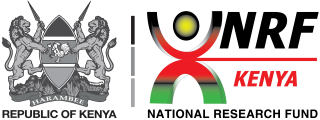Browsing by Author "Gachene, Charles K. K."
Now showing 1 - 2 of 2
Results Per Page
Sort Options
Publication Optimizing yield and economic returns of rain-fed potato (Solanum tuberosum L.) through water conservation under potato-legume intercropping systems(Elsevier, 2018-09-30) Gitari, Harun I.; Gachene, Charles K. K.; Karanja, Nancy N.; Kamau, Solomon; Nyawade, Shadrack; Sharma, Kalpana; Schulte-Geldermann, ElmarEven though potato (Solanum tuberosum L.)-based intercropping systems are widely practised in developing countries, only a few studies have focused on legumes as the companion intercrops. This study was conducted to assess the effect of incorporating legumes into the potato production system on ground cover, soil moisture content (SMC), tuber and legume yield, potato equivalent yield (PEY), gross and net income and benefit: cost ratio (BCR). The treatments comprised of pure potato stand (PS), potato-dolichos (Lablab purpureus L.) (PD), potato-garden pea (Pisum sativum L.) (PG) and potato-bean (Phaseolus vulgaris L.) (PB). Results indicated a significantly higher (69%) ground cover at tuber initiation stage in PD compared to 66% in PG and PB and 56% in PS. Similarly, the highest SMC values were recorded at tuber initiation stage: 230, 207, 201 and 188 mm m−1 in PD, PG, PB and PS, respectively. Fresh tuber yield was highest in PS (36 t ha−1) and PD (35 t ha−1) and lowest in PG (29 t ha−1). PEY was higher under intercropping than monocropping systems. Potato-dolichos was the most profitable intercropping system with a net income of US$ 9174 ha−1 and a BCR of 5.7 compared to PS (US$ 7436 ha−1) with a BCR of 5.1. The study showed that dolichos is a promising legume crop that could be integrated into potato cropping systems to improve CWP without compromising the tuber yield.Publication Revisiting intercropping indices with respect to potato-legume intercropping systems(Elsevier, 2020-11-01) Gitari, Harun I.; Nyawade, Shadrack O.; Kamau, Solomon; Karanja, Nancy N.; Gachene, Charles K. K.; Raza, Muhammad A.; Maitra, Sagar; Schulte-Geldermann, ElmarIntercropping is gaining popularity in developing countries as a viable strategy for diversifying cropping systems to ease food insecurity, given that arable land is shrinking, and demand for food crops is increasing due to rapid population growth. A field experiment was conducted in 2015 and 2016, to examine the biological and economic viability of two intercropping systems (potato-dolichos and potato-bean planted in two potatoes to legume population density ratios: 1.1:2 and 1: 2.4) and their corresponding pure stands. Intercropping systems were also evaluated based on five competition indices: relative crowding coefficient (K), aggressivity (A), competitive ratio (CR), intercropping advantage (IA) and actual yield loss (AYL). Although biological feasibility revealed that intercropping decreased the yield of intercrops compared with respective monocultures; the economic assessment of different cropping systems indicated that intercropping resulted in a higher remuneration (gross and net income) than pure stands. Intercropping potato with a high population of legume (in 1: 2.4 patterns), resulted in not only higher system productivity but also potato equivalent yield compared to 1.1:2. Intercropping proved to be advantageous with AYL decreasing with increasing proportion of the legumes, whereas IA increased as the population of legumes increased. With regard to competition between the intercrops, the potato was more aggressive (A of potato was positive, and its CR > 1) in all cropping systems, and it dominated over legume (that had negative A values and CR < 1). Aggressivity and dominance capacity was higher in 1: 2.4 than 1.1:2 series. These results suggest that potato-legume intercropping may provide viable intensification options, especially for smallholder farmers.
